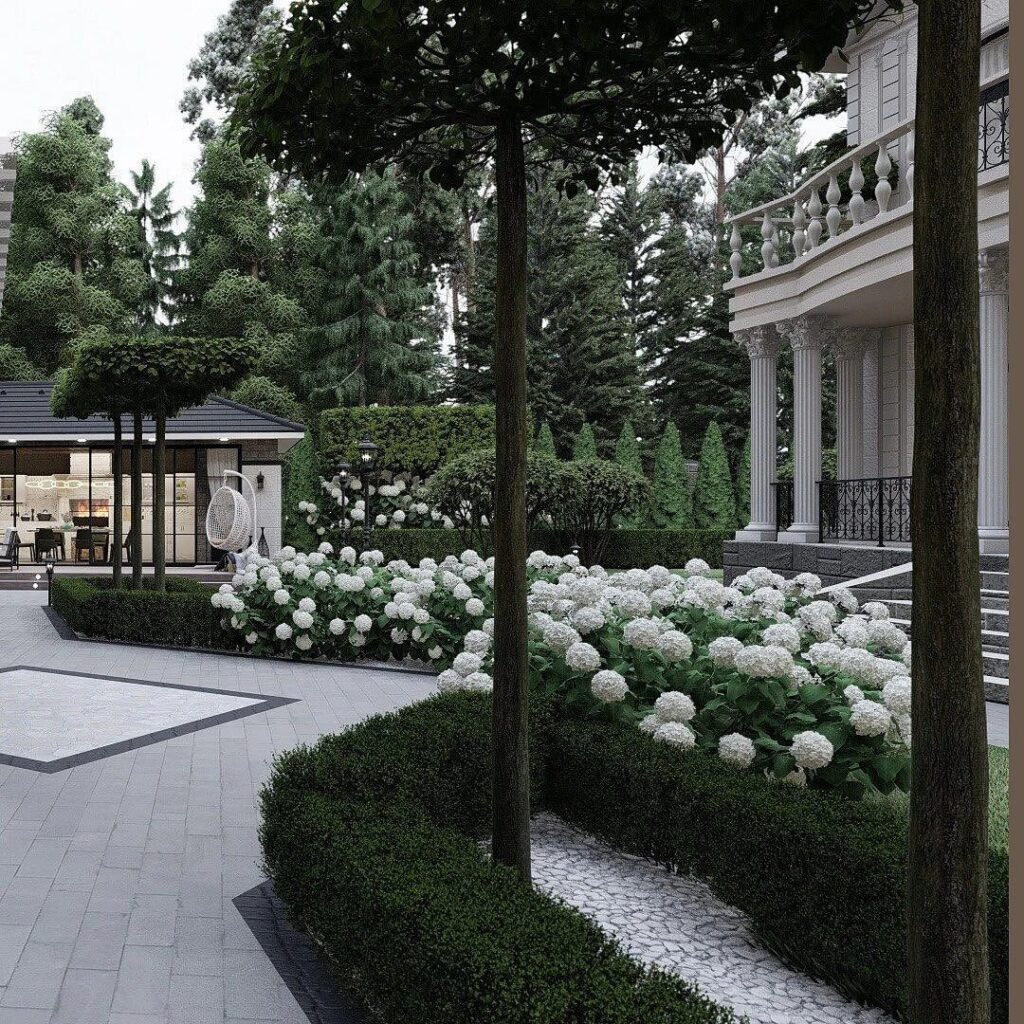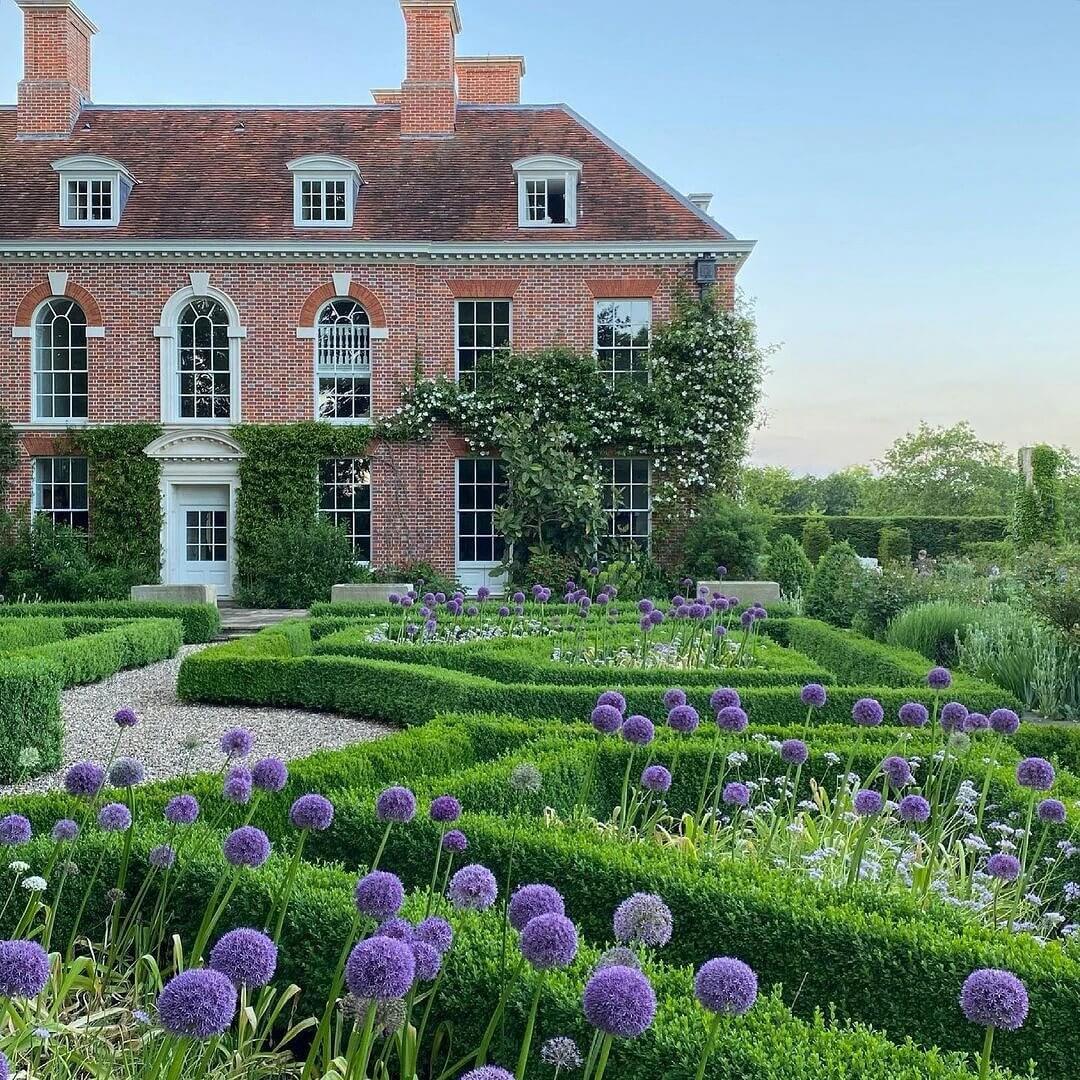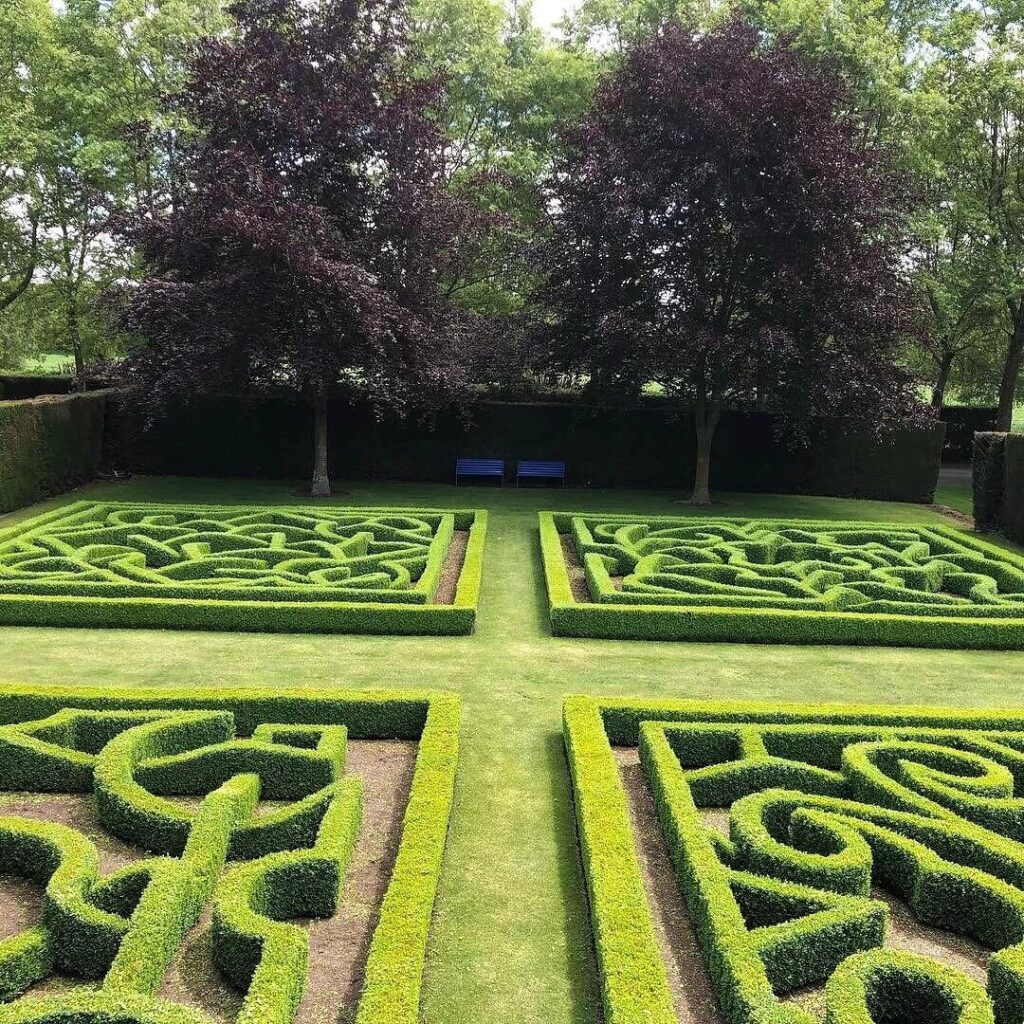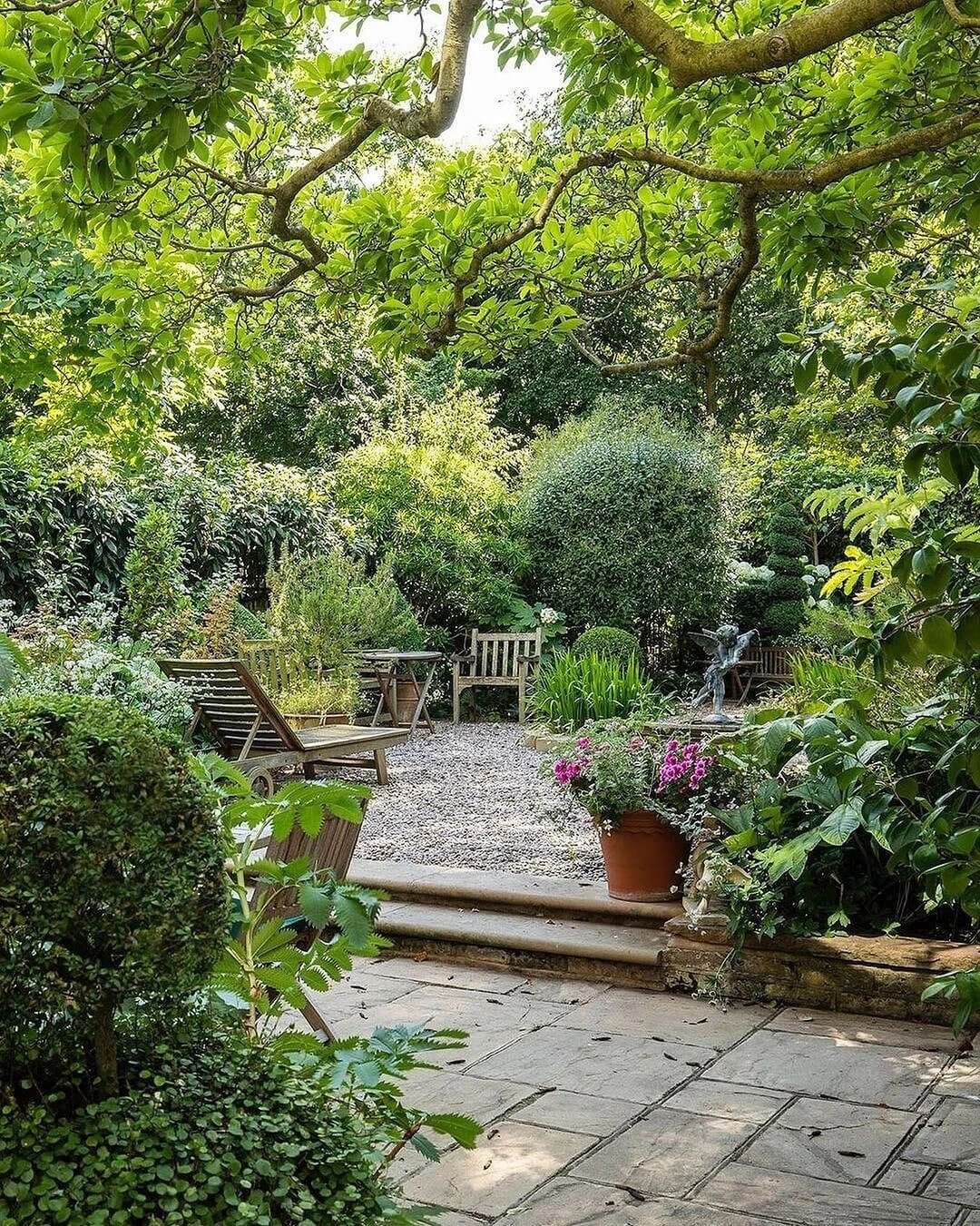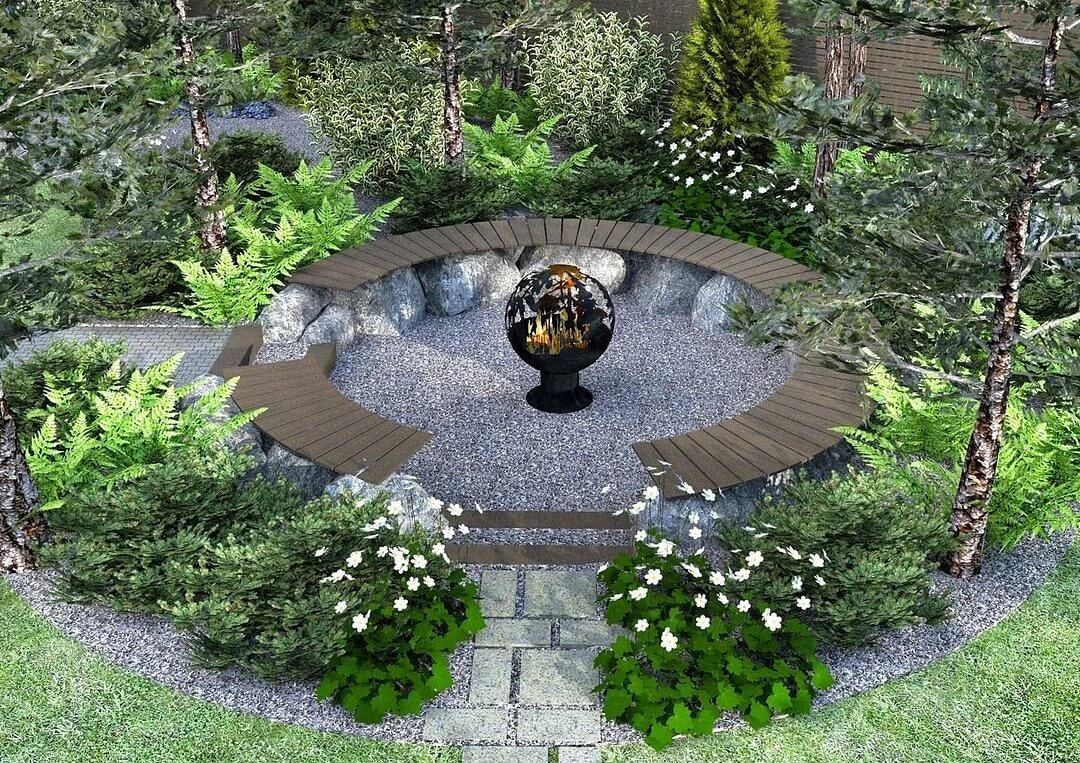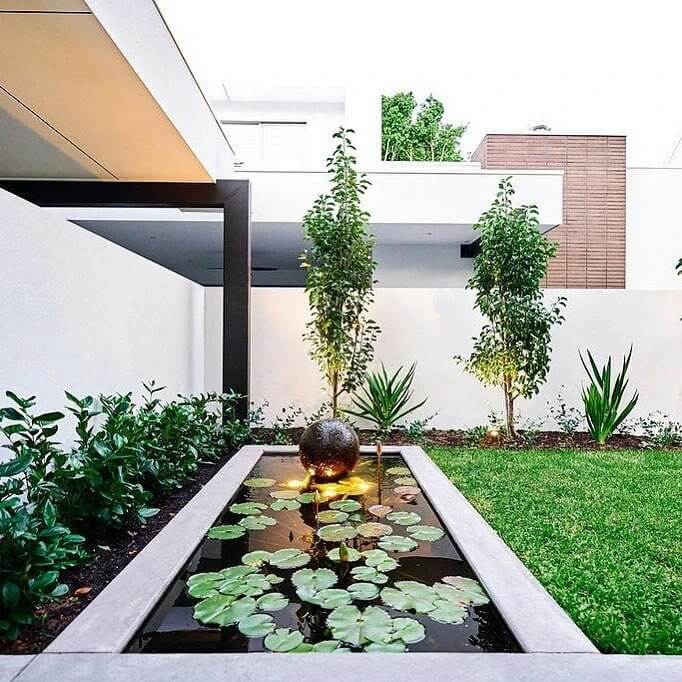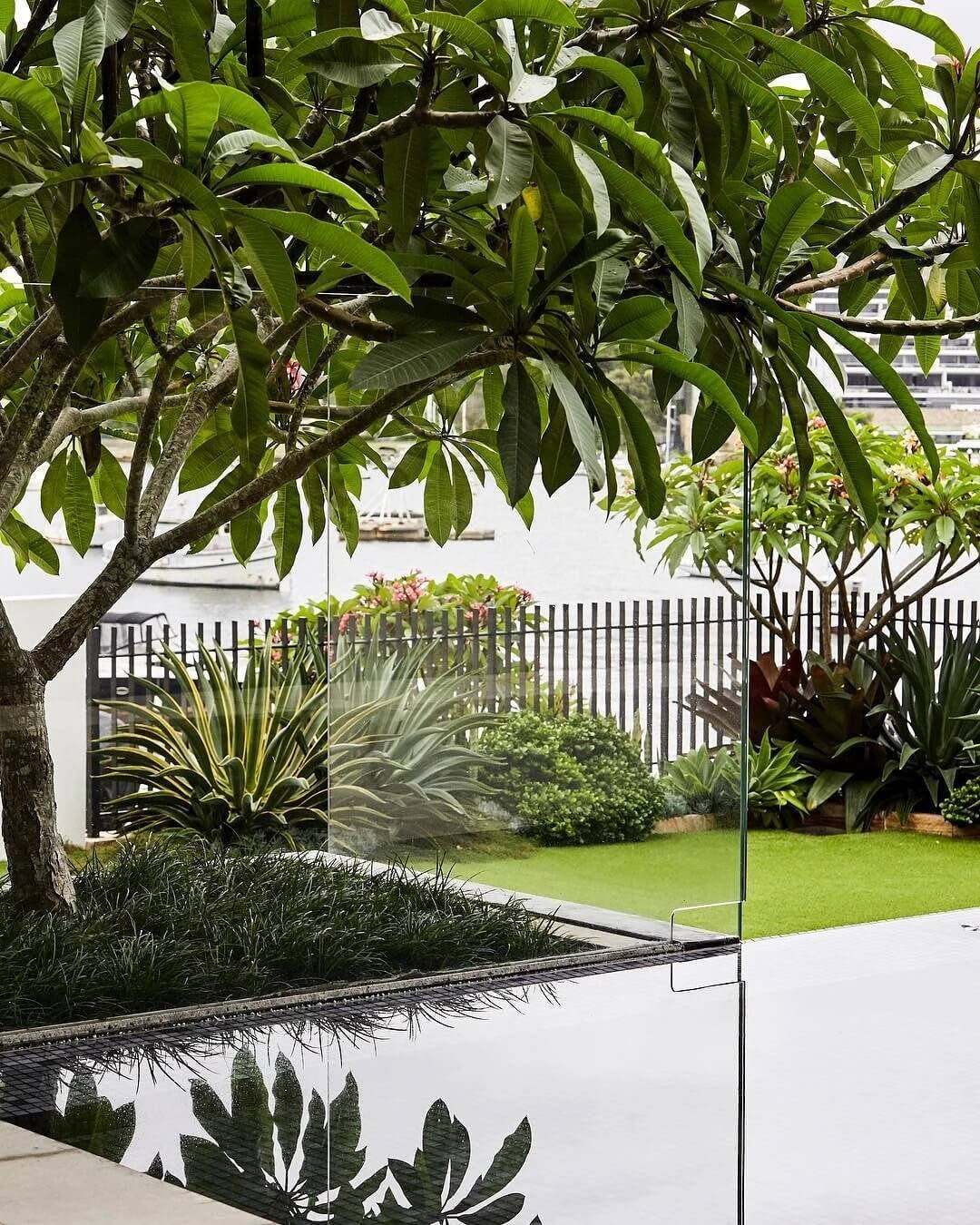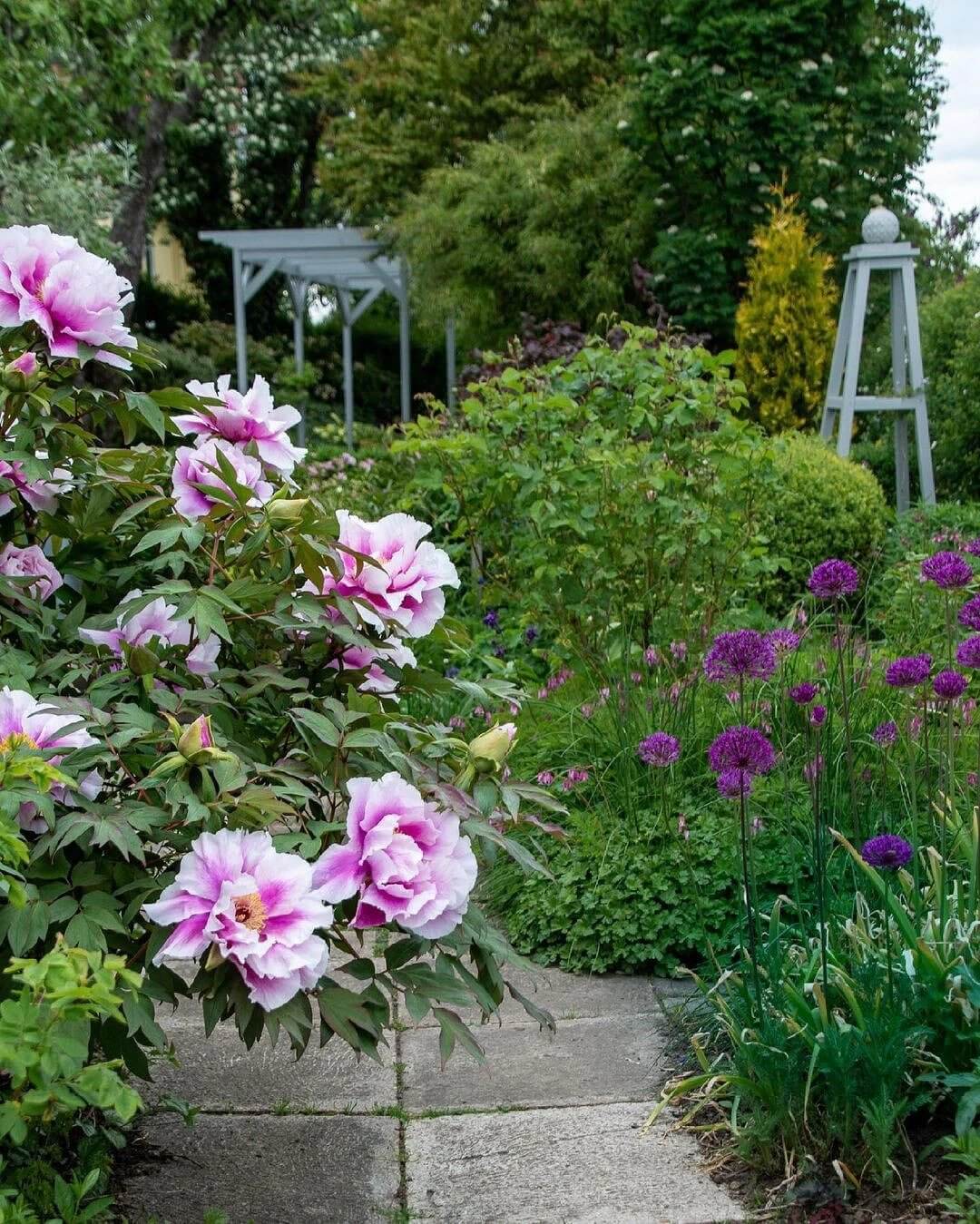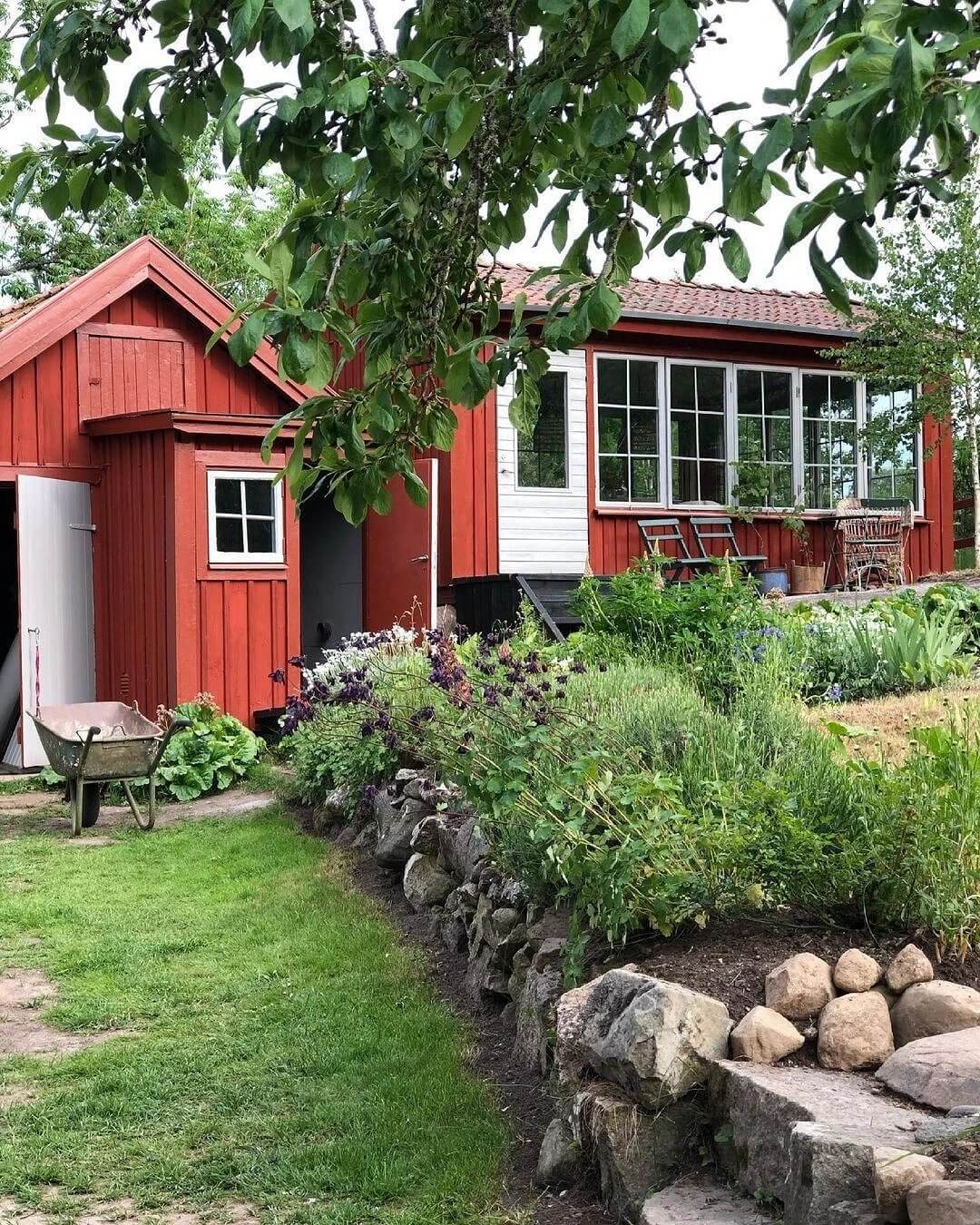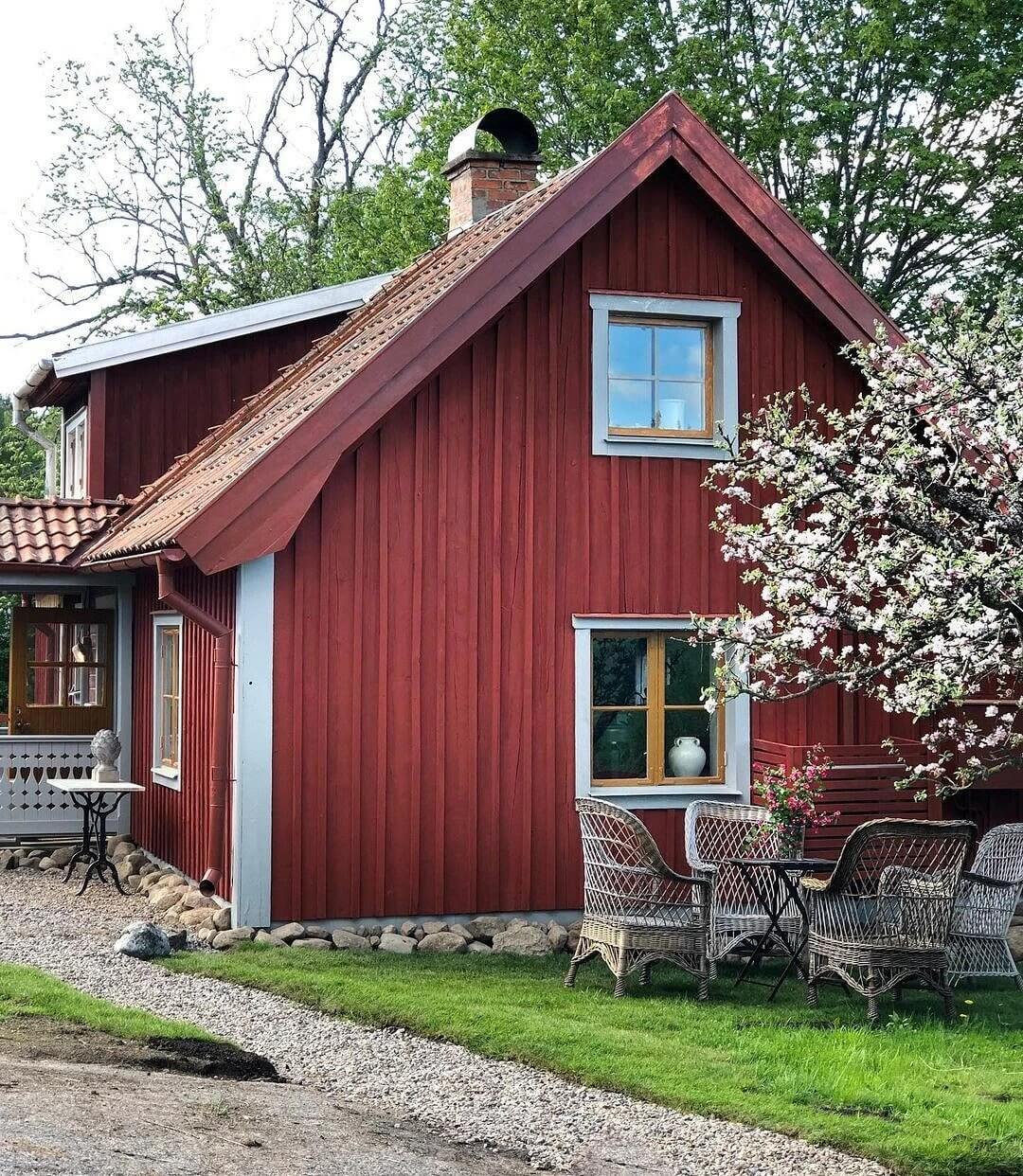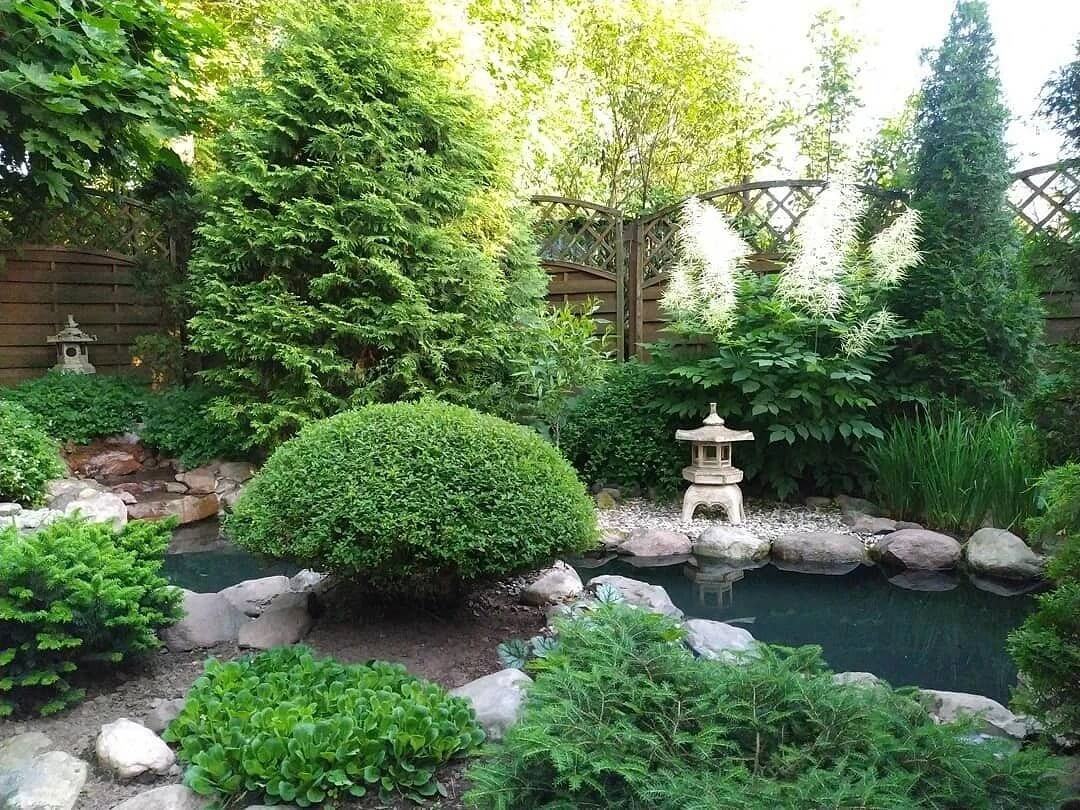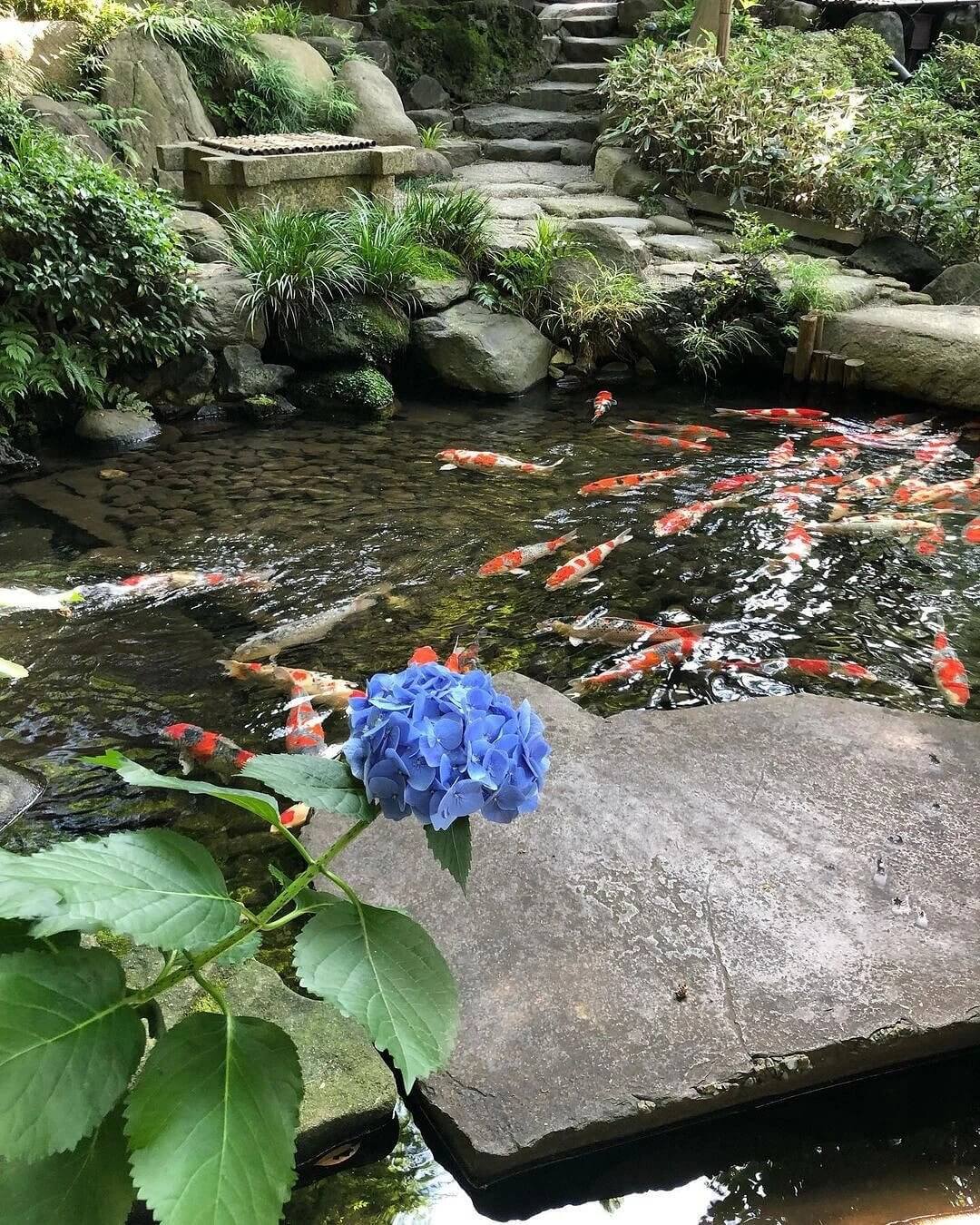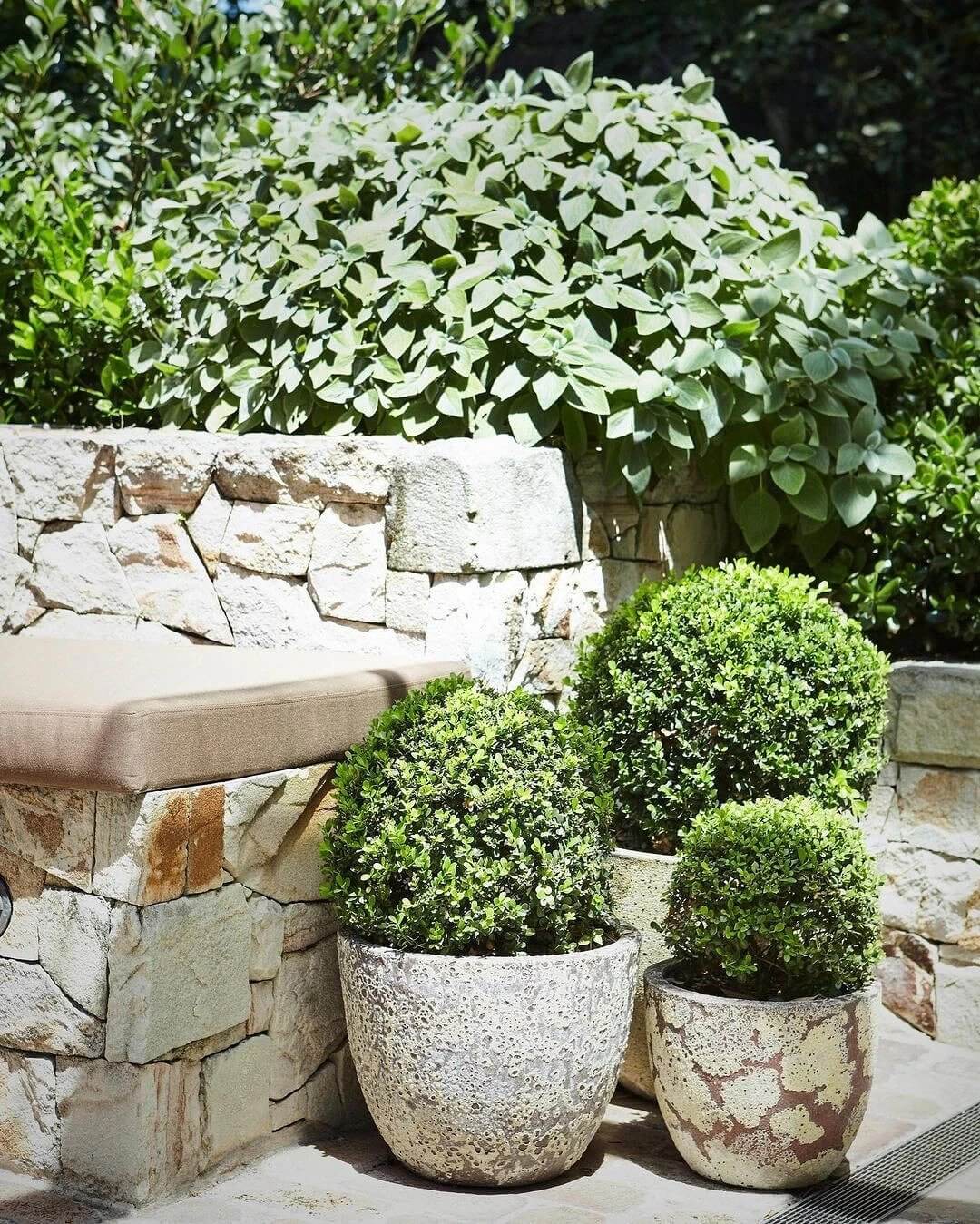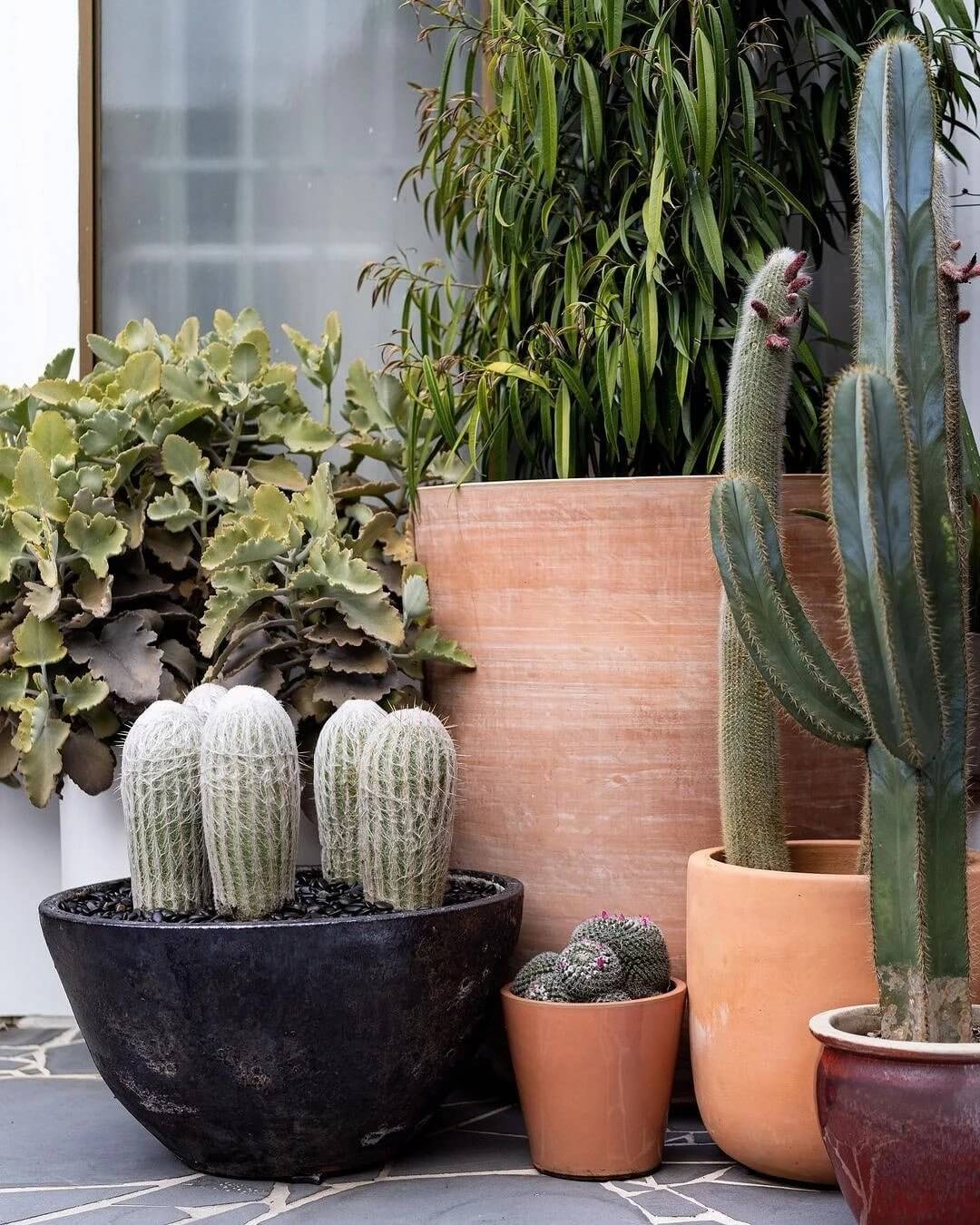The suburban area is designed according to the same principles as the interior of the house: it has its own style, composition, characteristic elements that are combined with each other. In this article, we talk about the main styles of landscape design : how they differ from each other and which one to choose for your site.
What styles of landscape design are there
In total, more than 20 areas are distinguished in landscape business, which are divided into two large groups: historical and modern. Let’s consider the most popular ones.
1. Classic
He’s regular. It is in this style that we imagine gardens when we think of Versailles and other royal parks. This trend, based on the classical canons, has the following features.
- Sharp geometric lines.
- Strong symmetry and compositional center (for example, a fountain, sculpture or flower bed).
- Shaped trees and shrubs framing alleys and paths.
- The use of natural materials – stone, marble, wood.
- Sculptures in antique style, large flowerpots, arches and columns as decorations.
- Ornamental reservoirs of the correct shape – most often a circle, square or rectangle.
- Smooth lawns as the foundation of the landscape.
- The predominance of white and green colors, which are diluted with bright accents – flowers in flower beds or in flowerpots.
2. English
In another way, it is called landscape. In contrast to the severity of the previous direction, this is based on a feeling of slight negligence and neglect. Carefully calibrated, of course. The main markers of this style will be as follows.
- Smooth lines, lack of strict forms.
- The house and the territory are perceived as one whole – creeping plants, braiding fences and walls, help in this .
- Winding paths winding between bushes and flower beds.
- Gardening of different heights – all plants are of different sizes.
- Hedges.
- Artificial reservoirs of natural form, water lilies or lilies grow in the water.
- Benches drowning in flowers or a table with chairs for tea drinking in nature.
Such a territory requires constant care, because otherwise the feigned neglect will turn into a real one, and the territory will be mired in weeds and unkempt plants.
3. Rustic
Country is one of the most cheerful and easy-to-perform styles, for which many fell in love. Its features can be described as follows.
- Ease, the main goal is to please the eye and promote outdoor recreation.
- The use of natural materials (wood, straw, stone, vine) and bright colors.
- Landscaping with unpretentious plants that are easy to care for.
- Fruit trees, berry bushes, medicinal crops and spices (thyme, cloves, lemon balm, thyme, mint).
- The lawn may not be perfectly flat, the pursuit of natural lines, minimal human intervention.
- Curly pots and pots, garden figurines, benches from logs, original club design are used as decor.
4. Modern
The first of the modern trends. It appeared at the beginning of the twentieth century during the heyday of Art Deco and Art Nouveau. It is characterized by such features.
- Smooth shapes and transitions, mobility of lines.
- Harmony of elements, everything flows and flows into each other.
- A clear composition, but at the same time asymmetry.
- Elegance and mystery.
- Natural materials – stone, wood.
- The presence of an artificial reservoir, fountain, stream or small pond .
Most often, climbing and creeping plants with leaves pointed at the end are chosen for a modern garden. Trees are of complex shape, with beautiful branches, for example, elm, willow, linden. Flowers – large, fragrant, with a deep bright color. Lilies, peonies, roses, daffodils, iris and poppy are best suited for this role. In general, plants are less important than decorative elements, which should be plentiful: from gazebos to beautiful flower pots.
5. Hi-tech
The most daring of all modern trends. Fully supports the philosophy of the interior “brother”.
- The most straight lines, the predominance of right angles.
- Rough industrial materials in the design of the territory – concrete, metal, glass, plastic, mirror surfaces.
- Plenty of free space, dominated by a simple lawn.
- Restrained colors without bright spots.
- Futuristic forms of decorative elements – for example, a fountain in the form of a cube, sphere or hemisphere.
The main advantage of such a design of the site is that it does not require constant and complex maintenance, therefore it is suitable for busy people who do not have time for painstaking daily care of the garden.
6. Minimalism
Minimalistically decorated plots are typical of modern houses of strict laconic forms. They are complemented by straight lines of the landscape, the absence of excessive pomp, classical sculptures and lush flowerpots. The main markers of minimalism in the garden are as follows.
- Monochrome colors – in the context of vegetation, this implies a predominance of green background and either a complete absence of other colors, or literally 2-3 blotches of colors.
- Strict geometry – is expressed not necessarily in a symmetrical arrangement of elements, but also in a well-thought-out composition as a whole.
- A minimum of decor. Simple garden furniture , 1-2 laconic sculptures, a gazebo are allowed .
- An evenly mown lawn prevails on the surface. Instead of winding paths, there are paved areas and straight paths. In general, stone can prevail over greenery.
- Artificial ponds or a pool are usually rectangular or square.
7. Eco
Otherwise it is called naturgarden (natural garden – from German). Its main idea is closeness to nature and maximum naturalness of the territory. Mini eco-systems are created on the site, where plants grow, develop and interact according to the laws of living nature. Human intervention is minimal, this is a departure from strict geometry to the feeling of a pristine forest or meadow. These gardens have the following characteristics.
- Landscaping with crops that grow in this area, without exotic.
- Decoration of terraces and gazebos with climbing plants .
- Lack of rigid geometric lines, natural flower beds.
- A lawn instead of a perfectly mowed lawn.
- The presence of a small garden or greenhouse.
- Clay pots, wheelbarrows, stones and curly driftwood as decorative elements.
8. Scandinavian
Scandi fell in love not only with residents of city apartments, but also with the owners of country houses. As a result, practicality and simplicity have become a whole separate direction in landscape business. What is typical for him?
- Practical minimalism – no complicated compositions, heaps of sculptures and intricate labyrinths of paths.
- Simplicity and functionality are paramount.
- Low trees and shrubs, flowers grow in neat flower beds, pots or trays.
- The landscaping is as natural as possible, it can be supplemented with a small artificial pond or a table with a couple of chairs.
- Naturally winding paths, covered with rubble, sand or stone, there may be slopes and hills on the territory.
Most often, this style is used in small areas where compact houses are located. Suitable for classic six acres .
9. Japanese
The most popular destination among Asian exotics. The Japanese garden is elegance, mystery and symbolism in every detail. The basic principles are naturalness, harmony and asymmetry of all elements. They are not repeatable in shape and size. What should be in a Japanese garden?
- Plants – the natural landscape is taken as a basis, trees and shrubs are chosen elongated or round, necessarily sakura, plum or other flowering crops and conifers.
- Water comes in many different forms (pond, stream, waterfall, fountain), and the more, the better.
- Stones are the third obligatory element, they are placed on the territory in groups, the three main ones are arranged according to the principle of a triangle (one large in the center and two smaller ones next to each other).
As well as for scandi, the Japanese trend is characterized by diminutiveness, so that it is easy to implement it in a small area .
10. Mediterranean
The Mediterranean areas are characterized by warm bright colors and a lot of sun. The main markers of this style are as follows.
- Landscape design in such a way as to create chiaroscuro.
- Coniferous and fruit trees, palms, spreading shrubs, cacti.
- In general, unpretentious plants are chosen that can withstand dry weather .
- Flowers in large clay or stone pots.
- Since the summer is hot in the south, most of the lawn is replaced by a flat area covered with gravel, which retains moisture and makes it easier to maintain the territory.
- Winding garden paths paved with stone or mosaics.
- Cooling water on a hot day – a pool, fountain or small waterfall.
- Light garden furniture, most often a table and armchairs on a terrace or under a canopy, surrounded by flower pots.
11. Forest
Like Naturgarden, this trend is characterized by minimal interference with the natural landscape of the territory. This is a common solution for plots located in the forest, hence the name. The following is important for this style.
- Not to plan and plant the land, but to harmoniously link the house and the plot.
- Do not make major overhauls.
- Use natural materials, including in decoration – for example, instead of paving, lay paths with beams, bark or gravel.
- For landscaping, use the forest plants characteristic of the area to the maximum.
- Garden furniture and gazebos are also made from natural materials and varnished, without unnecessary pretentiousness and complex architectural forms.



